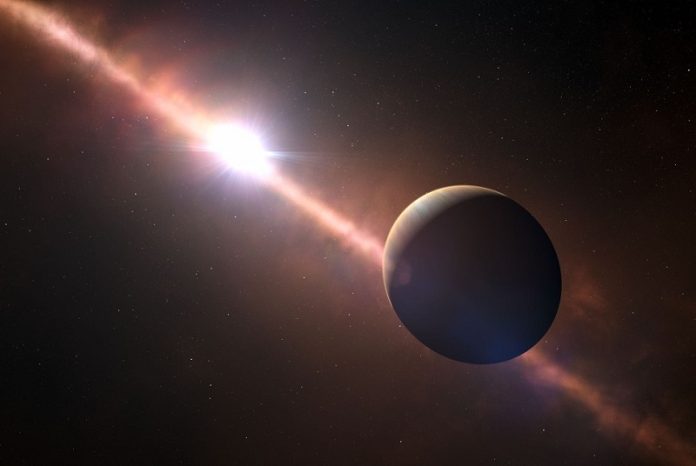
Ever wondered what it would be like to watch a planet go around its star?
A scientist has made a video that lets you do just that!
Jason Wang, an astrophysicist at Northwestern University, has created the longest time-lapse video of an exoplanet (a planet outside our Solar System) so far.
The video shows a big planet called Beta Pictoris b as it moves around its star. This planet is a giant—12 times bigger than Jupiter, the largest planet in our Solar System.
The video takes 17 years of real footage and shrinks it down to just 10 seconds! In those quick 10 seconds, you can see the planet make almost a full circle around its star.
Jason Wang is really good at making images of planets that are very far away. Last year, he made a 12-year video of four other exoplanets going around their star.
He says we need about six more years of watching Beta Pictoris b to see it complete one whole circle around its star. So, we have to wait a little more to see the full show!
Now, where is this big planet? It’s about 63 light-years away from us, in a constellation called Pictor.
The star it goes around, named Beta Pictoris, is way bigger and brighter than our Sun. It’s also pretty young, only around 20 to 26 million years old (our Sun is about 4.6 billion years old).
Beta Pictoris b was one of the first exoplanets to be found and directly pictured. Why? Because it’s so big and bright. It’s almost at the edge of being something even bigger than a planet, called a brown dwarf.
Making the video was not simple. First, Noel, another scientist, used special computer techniques to clean up and arrange old pictures of the planet from three different big telescopes. Then, Wang used another smart computer trick to make the pictures flow smoothly into a video. If he didn’t, the planet would look like it’s hopping around its star instead of smoothly going around it.
Wang also used some advanced tech to make the images clearer and reduce the blinding light from the star in the center. Even then, the star’s light sometimes hides the planet. In those parts, Wang marks the spot where the planet should be with an “x” so we can keep track of it.
Jason Wang believes that watching videos like this can make people feel amazed about how our universe works. He says that seeing something happen right before your eyes can be way more exciting than just looking at graphs or numbers.
So, if you’re curious about what’s happening out there in space, keep an eye out for more videos like this one. It gives us a peek into the amazing movements of planets far, far away!
Follow us on Twitter for more articles about this topic.



